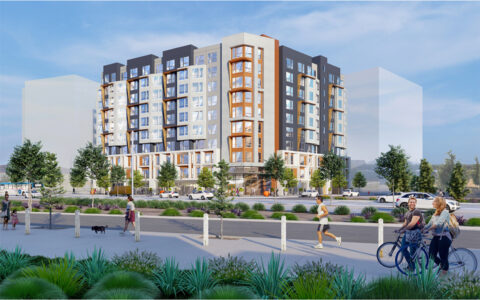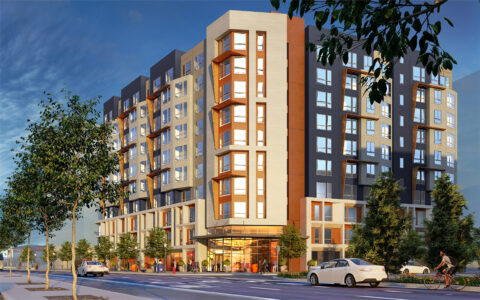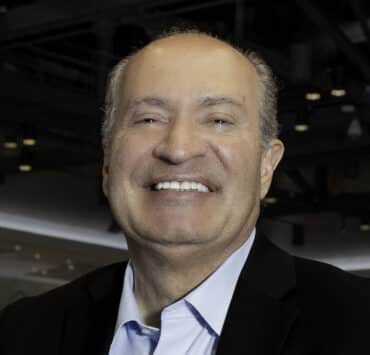|
Getting your Trinity Audio player ready...
|
Consider those who ride public transit in Silicon Valley, one of the wealthiest and most expensive places to live in the country. Ron Golem, director of real estate and transit-oriented development for the Santa Clara Valley Transportation Authority (locally known as the VTA), points to some telling statistics about the people who climb aboard VTA buses every day.
“The median household income of people that ride our buses is under $40,000 a year,” Golem says. “You cannot live in this area on $40,000 a year. I don’t see how you can talk about helping your riders if you’re not addressing larger needs in the region.”
While income for the VTA’s rail riders skews a bit higher, Golem still faces an incredibly difficult task encompassing transient-oriented development, affordable housing, the decades-long Silicon Valley Bay Area Rapid Transit (BART) expansion, economic development, and public-private partnerships. It may not be his job to keep the trains running on time, but that seems like the only job he and his team aren’t tasked with at present.

How does a transit authority look to remedy housing affordability issues brought about by decades of underproduction? The director says it’s a never-ending cycle of trying to identify all the funding forces, while potentially creating new ones, to help subsidize the cost of building affordable housing.
The VTA has set a high bar for developers building residential projects. Currently, 25 percent of its projects are slated to be affordable housing for those who make 60 percent of the area median income or less. It’s aggressive, but doable, Golem says.
“One of the levers that we have as agencies is that while we’re trying to negotiate some value for land, we do not have to get fair market value,” he explains. “We can also partner with the city so they can come add some assistance to the mix.”
Looking ahead, the VTA wants 40 percent of its entire portfolio to be affordable housing. It aims to achieve this through doing a mix of projects: some that are 100 percent affordable housing and others that are mixed income.
“I don’t see how you can talk about helping your riders if you’re not addressing larger needs in the region.”
Ron Golem
Another project in Golem’s purview is the ongoing BART extension, an effort to extend rapid transit service to Santa Clara County via the East Bay that has been in the works since 2001. With tens of millions of square feet of development planned over the next few decades, BART is still a transformational project, and Golem wants to help create inviting, strategically dense transit-oriented communities in locations that attract businesses, pedestrians, and riders alike.
“This isn’t just about building a transit extension,” Golem asserts. “This is about better connecting land use and transit. How do we build the extension to make sure the development occurs and grows your ridership base?”
The goal is growth without additional auto congestion. It’s about creating an environment, not just a building, and entails working with cities and private owners to build transit-oriented communities with mixed-income housing, employment, shopping, entertainment, recreation, and great public spaces.
“We all need to think about the kind of future we want to create.”
Ron Golem
“You need to create a place that is as nice to walk or ride a bike as it is to drive a car,” he says. He aims for “complete streets,” a transportation policy that takes into careful consideration everyone who uses the streets. “How do you create a great cityscape? That’s what we work on every day.”
Fortunately, Golem has been engaged in creating fruitful and lasting public partnerships for many years now. He’s worked for developers, consultants, and firms, and has a bachelor’s degree in economics to boot. He knows what it takes to bring together two parties with different objectives.
The best developers now understand that development and quality of place drive long-term value. “These partnerships have come a long way,” he says. “I remember many years ago, I asked a developer what a good building looks like. He said, ‘a leased building is a good-looking building.’ Fortunately, the development industry has gotten much more focused on quality of place.”

Golem continues, “From the public side, we are both the ones pushing but also making it happen through a framework of what is economically feasible. A lot of this comes back to my and my team’s relationships in our community. So much of making these partnerships work is about trust.”
In many ways, the VTA is at the epicenter of issues such as climate change, income inequality, and housing scarcity that will be coming to our own communities soon (if they haven’t already). The role of public-private relationships in confronting these challenges is another area where California is ahead of the rest of the country.
How Golem and his team make inroads might help provide a blueprint for the challenges we all face, but it’s everyone’s job to help make their world a better place.
“We’re all planners,” he says. “We all need to think about the kind of future we want to create.”


